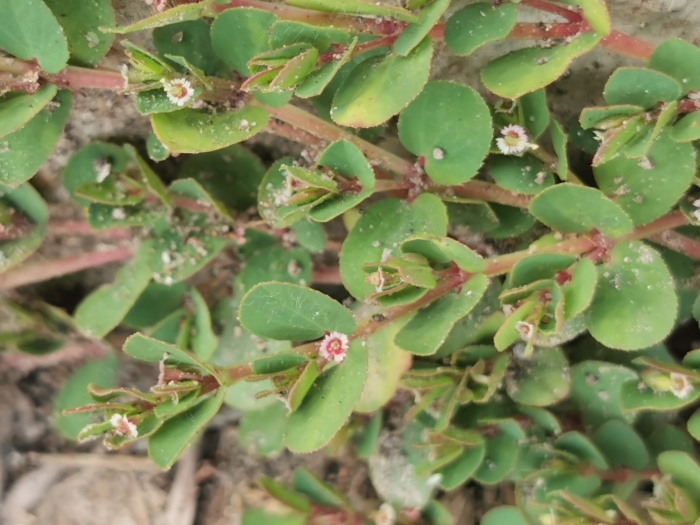Thyme-Leaf Spurge
(Euphorbia serpillifolia)
Thyme-Leaf Spurge (Euphorbia serpillifolia)
/
/

M. Socorro González Elizondo
CC BY-SA 4.0
Image By:
M. Socorro González Elizondo
Recorded By:
Copyright:
CC BY-SA 4.0
Copyright Notice:
Photo by: M. Socorro González Elizondo | License Type: CC BY-SA 4.0 | License URL: http://creativecommons.org/licenses/by-sa/4.0/ | Rights Holder: M. Socorro González Elizondo | Publisher: iNaturalist | Date Created: 2022-10-09T18:24:24-07:00 |



























Estimated Native Range
Summary
Euphorbia serpillifolia, commonly known as Thyme-Leaf Spurge, Thymeleaf Sandmat, Sand Mat, Thyme-Leaved Spurge, or Thyme-Leaved Sandmat, is an annual herb native to open, sunny habitats including grasslands, coastal dunes, and disturbed sites in the Mediterranean region, Northern Africa, and Western Asia. It typically grows rapidly to a height of 0.1-0.3 feet (0.03-0.1 meters) and spreads 0.5-1 feet (0.2-0.3 meters), forming a low, mat-like ground cover. The plant has small, yellow, inconspicuous flowers that bloom in the summer, and its foliage resembles that of thyme, hence the common name.
Thyme-Leaf Spurge is valued for its drought tolerance and ability to thrive in poor, sandy soils, making it suitable for xeriscaping and rock gardens. It is often used as a ground cover or filler in sunny borders and can be a low-maintenance option for gardeners seeking coverage in challenging conditions. It requires full sun or part shade and prefers fast-draining sandy or loamy soils with low water needs once established. While it is not known for significant pest or disease issues, it can self-seed prolifically, which may be undesirable in some settings. Gardeners should handle the plant with care, as the sap can be irritating to the skin and toxic if ingested.CC BY-SA 4.0
Thyme-Leaf Spurge is valued for its drought tolerance and ability to thrive in poor, sandy soils, making it suitable for xeriscaping and rock gardens. It is often used as a ground cover or filler in sunny borders and can be a low-maintenance option for gardeners seeking coverage in challenging conditions. It requires full sun or part shade and prefers fast-draining sandy or loamy soils with low water needs once established. While it is not known for significant pest or disease issues, it can self-seed prolifically, which may be undesirable in some settings. Gardeners should handle the plant with care, as the sap can be irritating to the skin and toxic if ingested.CC BY-SA 4.0
Plant Description
- Plant Type: Herb
- Height: 0.1-0.3 feet
- Width: 0.5-1 feet
- Growth Rate: Rapid
- Flower Color: Yellow
- Flowering Season: Summer
- Leaf Retention:
Growth Requirements
- Sun: Full Sun, Part Shade
- Water: Low
- Drainage: Fast
Common Uses
Drought Tolerant, Low Maintenance
Natural Habitat
Open, sunny habitats including grasslands, coastal dunes, and disturbed sites
Other Names
Common Names: Thymeleaf Sandmat, Sand Mat, Thyme-Leaved Spurge, Thyme-Leaved Sandmat
Scientific Names: , Euphorbia serpillifolia, Chamaesyce serpillifolia, Euphorbia hirtula, Euphorbia serpillifolia var. genuina, Euphorbia serpyllifolia subsp. hirtula,
GBIF Accepted Name: